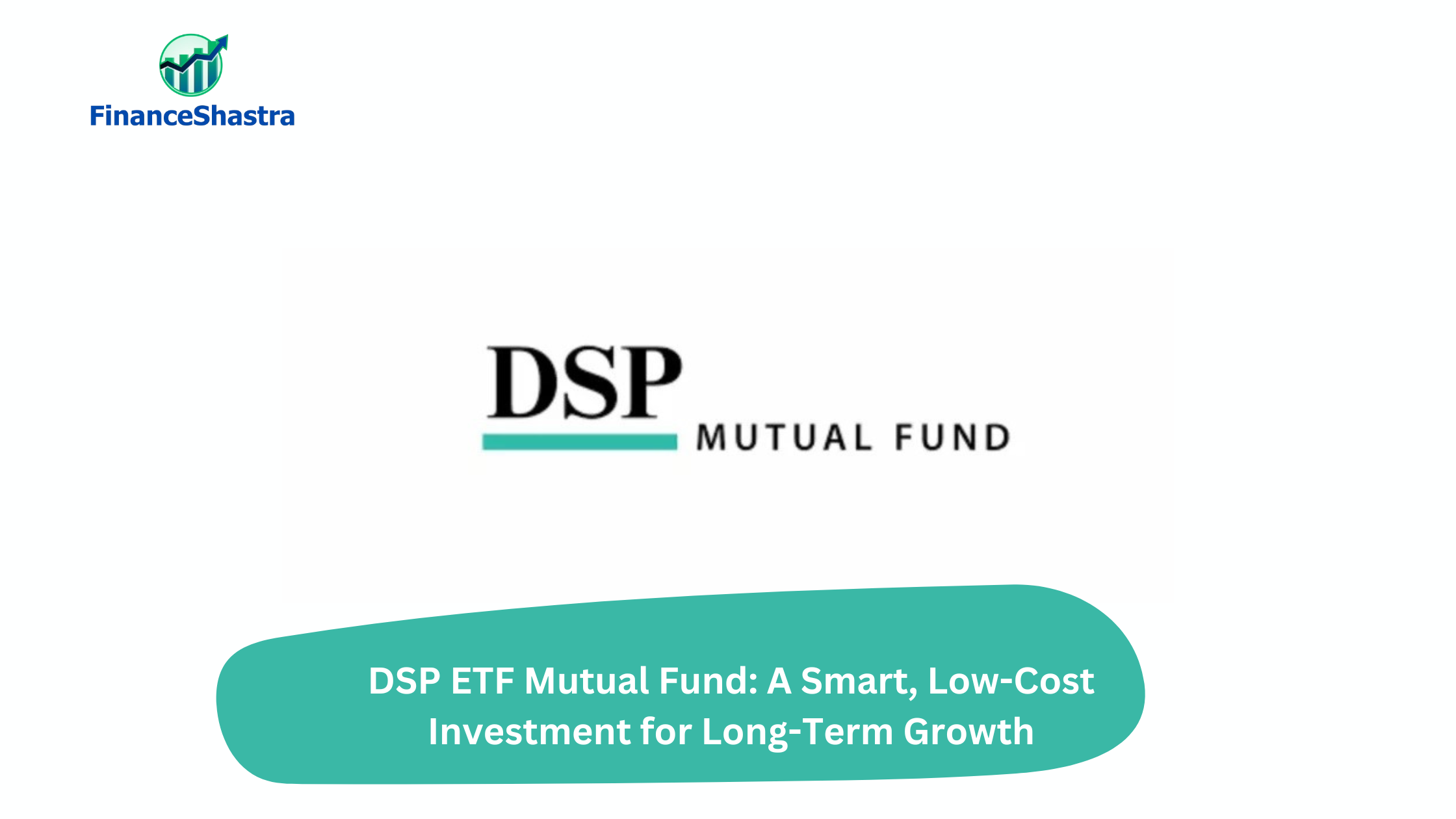DSP ETF Mutual Fund: A Smart, Low-Cost Investment for Long-Term Growth
Business and Industry Overview
DSP ETF Mutual Fund is a part of DSP Mutual Fund. It provides Exchange-Traded Funds (ETFs) that follow stock market indices. One of its main products is the DSP Nifty 50 ETF. This fund allows people to invest in the top 50 companies in India that are listed on the National Stock Exchange (NSE). The goal of this fund is to match the performance of the Nifty 50 Index. It does this by investing in the same companies as the index. Since this is a passive fund, it does not require much management. This keeps the costs low. ETFs like DSP Nifty 50 ETF offer diversification (spreading risk by investing in many companies), transparency (investors can see exactly where their money is going), and liquidity (investors can buy and sell easily). These benefits make ETFs popular among both small and big investors. ETFs are becoming more popular because they are low-cost and simple to invest in. Many investors prefer them over mutual funds that require active management. Other big ETF providers in India include Nippon India ETF, ICICI ETF, SBI ETF, and HDFC ETF. The stock market regulator, SEBI, is making new rules to ensure more transparency and lower costs for investors. Because of this, more people are choosing ETFs over actively managed funds. However, since ETFs follow the market, their performance depends on market conditions. If the market falls, the ETF will also lose value.
Latest MF News
DSP Mutual Fund has introduced India’s first Nifty Top 10 Equal Weight Index Fund and ETF. This fund invests equally in the top 10 biggest companies in the Nifty index, based on their market value. The fund’s goal is to take advantage of these large companies, which are better priced compared to others. This can offer a safer and smarter investment strategy.
The New Fund Offer (NFO) opens on August 16 and closes on August 30. The minimum investment is ₹100 for the Index Fund and ₹5,000 for the ETF. The fund is managed by Anil Ghelani and Diipesh Shah. It follows an equal-weight strategy, which means each of the 10 companies gets an equal share of the investment.
The expense ratio (management cost) is 1% for the regular plan, 0.25% for the direct plan, and 0.2% for the ETF. Experts believe this fund can help reduce losses in market downturns and provide strong long-term returns. It is a good option for investors who want steady growth and lower risk compared to investing in smaller companies. However, returns may be slightly different from the index due to tracking errors (small differences in fund performance compared to the actual index).
Potentials
Future Growth and Opportunities
DSP Mutual Fund can grow by starting new ETFs in different sectors like banking and technology. More big investors, like banks and pension funds, are putting their money into ETFs. This is making ETFs more popular. Many small investors are also using Systematic Investment Plans (SIP) to invest in ETFs. This helps the ETFs grow steadily and stably. ETFs are becoming very popular worldwide, and Indian ETFs like DSP can also benefit from this trend.
Risks in Investing
Investing in DSP Nifty 50 ETF has some risks. Market risk means that if the Nifty 50 index goes down, this ETF will also lose value. There is also tracking error, which means the ETF may not exactly match the Nifty 50 because of extra costs and small differences in trading. Another risk is high competition. Many companies offer ETFs, and DSP must compete to attract more investors. Lastly, there is liquidity risk. This means there may not always be enough buyers and sellers in the market. This can make it difficult to sell the ETF at the expected price.
Analyst Insights
The DSP Nifty 50 ETF is a safe and reliable investment for people who want to grow their money with the market at a low cost. It is easy to invest in, low-cost, and provides diversification. However, it is not for short-term traders who want quick profits. If you are a long-term investor, this ETF can be a great addition to your portfolio.
Buy, Hold, or Sell?
🔹 Buy if you’re looking for a simple, low-cost, and long-term investment with steady growth.
🔹 Hold if you already own the ETF and want consistent returns without actively managing stocks.
🔹 Sell if you prefer higher returns through active trading or seek quick profits.

